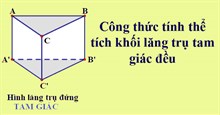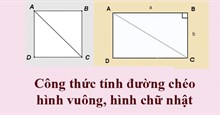VueJS là thư viện front-end có thể được sử dụng với bất kỳ ngôn ngữ back-end nào. Nếu muốn tạo ứng dụng front-end đầy đủ chức năng, thì vue-router và vue-resource là hai yếu tố chính tuyệt vời trong VueJS.
Bài viết hôm nay sẽ tìm hiểu sâu về Vue router. Routing (định tuyến) là cách để quản lý các thành phần trong Single Page Applications (SPA). Tất cả các framework front-end nổi tiếng đều sử dụng khái niệm Routing.
Vue router là gì?

Vue router là router chính thức cho Vue.js. Nó tích hợp sâu với Vue.js core để giúp xây dựng các SPA với Vue.js một cách dễ dàng. Các tính năng bao gồm:
- Nested route (định tuyến lồng nhau)/view mapping
- Cấu hình router dựa trên thành phần, mô-đun
- Định tuyến tham số, truy vấn, ký tự đại diện
- Xem các hiệu ứng chuyển tiếp được cung cấp bởi hệ thống chuyển tiếp của Vue.js
- Kiểm soát tính năng Fine-grained navigation
- Liên kết với các active CSS class tự động
- Chế độ HTML5 history mode hay hash mode, với tính năng auto-fallback trong IE9
- Hành vi cuộn tùy chỉnh
Cách sử dụng vue-router
Bước 1: Tạo 3 component bên trong thư mục Components
Trong thư mục, tạo 3 file component. Các file này sẽ giống trong snippet sau:
// Home.vue
<template>
<h1>Home</h1>
</template>
<script>
export default {
}
</script>Sau đó tạo file About.vue.
// About.vue
<template>
<h1>About us</h1>
</template>
<script>
export default {
}
</script>Cuối cùng, tạo file Contact.vue.
// Contact.vue
<template>
<h1>Contact us</h1>
</template>
<script>
export default {
}
</script>Bước 2: Cập nhật file index.html và thêm thuộc tính app id.
<html>
<body>
<link rel = "stylesheet" href = "style.css"/>
<link rel="stylesheet" href="https://maxcdn.bootstrapcdn.com/bootstrap/4.0.0-alpha.6/css/bootstrap.min.css" integrity="sha384-rwoIResjU2yc3z8GV/NPeZWAv56rSmLldC3R/AZzGRnGxQQKnKkoFVhFQhNUwEyJ" crossorigin="anonymous">
<div id="app"></div>
<script src = "main.js"></script>
</body>
</html>Bước 3: Cấu hình mô-đun vue-router
Trong file main.js, trước tiên, ta cần nhập mô-đun vue-router từ thư mục node_modules vì ta đã cài đặt tất cả các dependency trong dự án này. Sao chép code sau vào file main.js.
// main.js
import Vue from 'vue';
import VueRouter from 'vue-router';
Vue.use(VueRouter);
import Home from './components/Home.vue';
import About from './components/About.vue';
import Contact from './components/Contact.vue';
const router = new VueRouter({
mode: 'history',
base: __dirname,
routes: [
{ path: '/', component: Home },
{ path: '/about', component: About },
{ path: '/contact', component: Contact }
]
});
new Vue({
router,
template: `
<div>
<nav class="navbar navbar-toggleable-md navbar-light bg-faded">
<div class="collapse navbar-collapse" id="navbarNav">
<ul class="navbar-nav">
<li class="nav-item"><router-link to="/" class="nav-link">Home</router-link></li>
<li class="nav-item"><router-link to="/about" class="nav-link">About</router-link></li>
<li class="nav-item"><router-link to="/contact" class="nav-link">Contact</router-link></li>
</ul>
</div>
</nav>
<router-view class="view"></router-view>
</div>
`
}).$mount('#app');Bước 4: Chạy code và xem đầu ra cuối cùng
Bây giờ, có 3 mục trong thanh Navigation và nếu bạn nhấp vào một trong số chúng, route bên dưới sẽ thay đổi và bạn có thể thấy ứng dụng vue-router hoạt động. Ví dụ đã bao gồm tất cả các file dự án chính ở đây cũng như (bạn cũng có thể tìm thấy dự án này trên Github: https://github.com/KrunalLathiya/playground-UjLAnHRe).
package.json
{
"name": "vuerouter",
"version": "1.0.0",
"description": "",
"main": "index.js",
"scripts": {
"start": "webpack-dev-server --host 0.0.0.0 --disable-host-check"
},
"author": "",
"license": "ISC",
"devDependencies": {
"babel-core": "^6.25.0",
"babel-loader": "^7.1.1",
"babel-plugin-transform-runtime": "^6.23.0",
"babel-preset-es2015": "^6.24.1",
"babel-preset-stage-3": "^6.24.1",
"babel-runtime": "^6.25.0",
"vue-loader": "^13.0.2",
"vue-template-compiler": "^2.4.2",
"webpack": "^3.4.1",
"webpack-dev-server": "^2.6.1"
},
"dependencies": {
"vue": "^2.4.2",
"vue-router": "^2.7.0"
}
}webpack.config.js
var path = require('path');
module.exports = {
// This is the "main" file which should include all other modules
entry: path.join(__dirname,'/main.js'),
// Where should the compiled file go?
output: {
filename: 'bundle.js'
},
resolve: {
alias: {
vue: 'vue/dist/vue.js'
}
},
module: {
// Special compilation rules
loaders: [
{
// Ask webpack to check: If this file ends with .js, then apply some transforms
test: /\.js$/,
// Transform it with babel
loader: 'babel-loader',
// don't transform node_modules folder (which don't need to be compiled)
exclude: /node_modules/
},
{
// Ask webpack to check: If this file ends with .vue, then apply some transforms
test: /\.vue$/,
// don't transform node_modules folder (which don't need to be compiled)
exclude: /(node_modules|bower_components)/,
// Transform it with vue
use: {
loader: 'vue-loader'
}
}
]
},
devServer: {
port: 3000
}
}main.js
import Vue from 'vue';
import VueRouter from 'vue-router';
Vue.use(VueRouter);
import Home from './components/Home.vue';
import About from './components/About.vue';
import Contact from './components/Contact.vue';
const router = new VueRouter({
mode: 'history',
base: __dirname,
routes: [
{ path: '/', component: Home },
{ path: '/about', component: About },
{ path: '/contact', component: Contact }
]
});
new Vue({
router,
template: `
<div>
<nav class="navbar navbar-toggleable-md navbar-light bg-faded">
<div class="collapse navbar-collapse" id="navbarNav">
<ul class="navbar-nav">
<li class="nav-item"><router-link to="/" class="nav-link">Home</router-link></li>
<li class="nav-item"><router-link to="/about" class="nav-link">About</router-link></li>
<li class="nav-item"><router-link to="/contact" class="nav-link">Contact</router-link></li>
</ul>
</div>
</nav>
<router-view class="view"></router-view>
</div>
`
}).$mount('#app');index.html
<html>
<body>
<link rel = "stylesheet" href = "style.css" />
<link rel="stylesheet" href="https://maxcdn.bootstrapcdn.com/bootstrap/4.0.0-alpha.6/css/bootstrap.min.css" integrity="sha384-rwoIResjU2yc3z8GV/NPeZWAv56rSmLldC3R/AZzGRnGxQQKnKkoFVhFQhNUwEyJ" crossorigin="anonymous">
<div id="app"></div>
<script src = "bundle.js"></script>
</body>
</html>Home.vue
<template>
<h1>Home</h1>
</template>
<script>
export default {
}
</script>About.vue
<template>
<h1>About us</h1>
</template>
<script>
export default {
}
</script>Contact.vue
<template>
<h1>Contact us</h1>
</template>
<script>
export default {
}
</script> Công nghệ
Công nghệ  AI
AI  Windows
Windows  iPhone
iPhone  Android
Android  Học IT
Học IT  Download
Download  Tiện ích
Tiện ích  Khoa học
Khoa học  Game
Game  Làng CN
Làng CN  Ứng dụng
Ứng dụng 







 Lập trình
Lập trình 



















 Linux
Linux  Đồng hồ thông minh
Đồng hồ thông minh  macOS
macOS  Chụp ảnh - Quay phim
Chụp ảnh - Quay phim  Thủ thuật SEO
Thủ thuật SEO  Phần cứng
Phần cứng  Kiến thức cơ bản
Kiến thức cơ bản  Dịch vụ ngân hàng
Dịch vụ ngân hàng  Dịch vụ công trực tuyến
Dịch vụ công trực tuyến  Dịch vụ nhà mạng
Dịch vụ nhà mạng  Quiz công nghệ
Quiz công nghệ  Microsoft Word 2016
Microsoft Word 2016  Microsoft Word 2013
Microsoft Word 2013  Microsoft Word 2007
Microsoft Word 2007  Microsoft Excel 2019
Microsoft Excel 2019  Microsoft Excel 2016
Microsoft Excel 2016  Microsoft PowerPoint 2019
Microsoft PowerPoint 2019  Google Sheets
Google Sheets  Học Photoshop
Học Photoshop  Lập trình Scratch
Lập trình Scratch  Bootstrap
Bootstrap  Văn phòng
Văn phòng  Tải game
Tải game  Tiện ích hệ thống
Tiện ích hệ thống  Ảnh, đồ họa
Ảnh, đồ họa  Internet
Internet  Bảo mật, Antivirus
Bảo mật, Antivirus  Doanh nghiệp
Doanh nghiệp  Video, phim, nhạc
Video, phim, nhạc  Mạng xã hội
Mạng xã hội  Học tập - Giáo dục
Học tập - Giáo dục  Máy ảo
Máy ảo  AI Trí tuệ nhân tạo
AI Trí tuệ nhân tạo  ChatGPT
ChatGPT  Gemini
Gemini  Điện máy
Điện máy  Tivi
Tivi  Tủ lạnh
Tủ lạnh  Điều hòa
Điều hòa  Máy giặt
Máy giặt  Cuộc sống
Cuộc sống  TOP
TOP  Kỹ năng
Kỹ năng  Món ngon mỗi ngày
Món ngon mỗi ngày  Nuôi dạy con
Nuôi dạy con  Mẹo vặt
Mẹo vặt  Phim ảnh, Truyện
Phim ảnh, Truyện  Làm đẹp
Làm đẹp  DIY - Handmade
DIY - Handmade  Du lịch
Du lịch  Quà tặng
Quà tặng  Giải trí
Giải trí  Là gì?
Là gì?  Nhà đẹp
Nhà đẹp  Giáng sinh - Noel
Giáng sinh - Noel  Hướng dẫn
Hướng dẫn  Ô tô, Xe máy
Ô tô, Xe máy  Tấn công mạng
Tấn công mạng  Chuyện công nghệ
Chuyện công nghệ  Công nghệ mới
Công nghệ mới  Trí tuệ Thiên tài
Trí tuệ Thiên tài  Bình luận công nghệ
Bình luận công nghệ